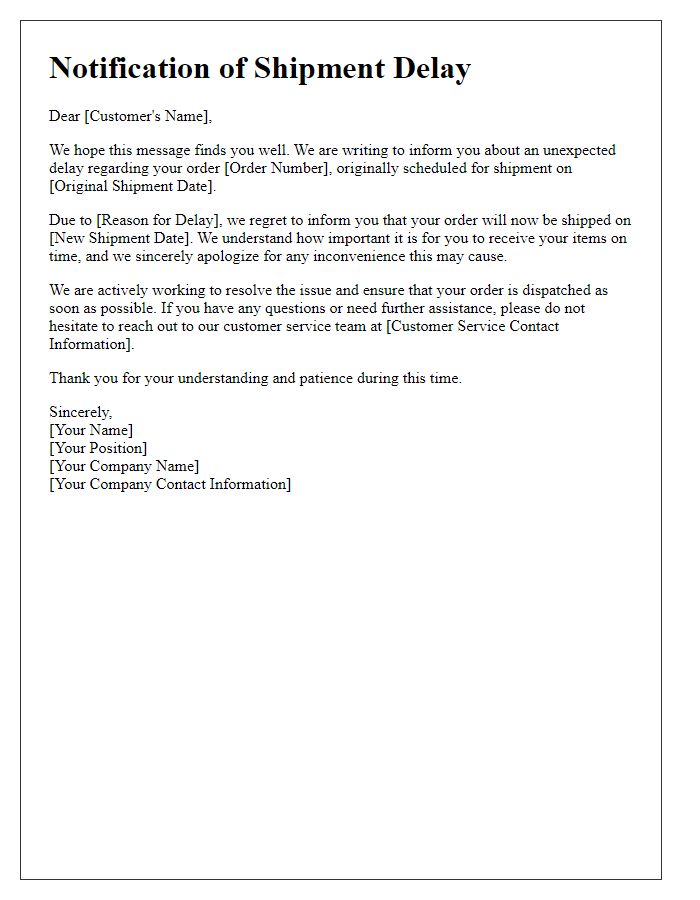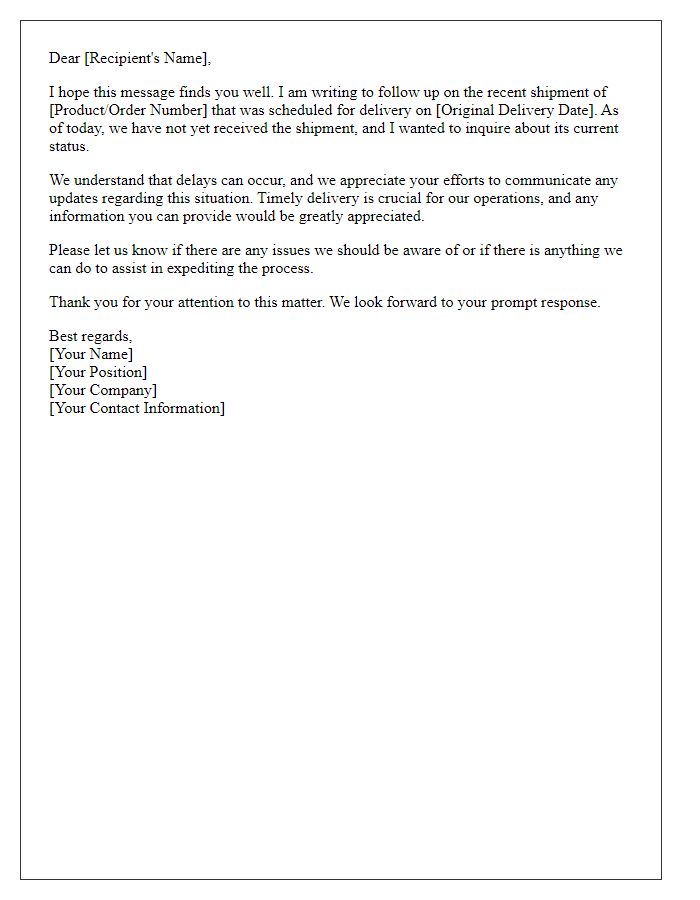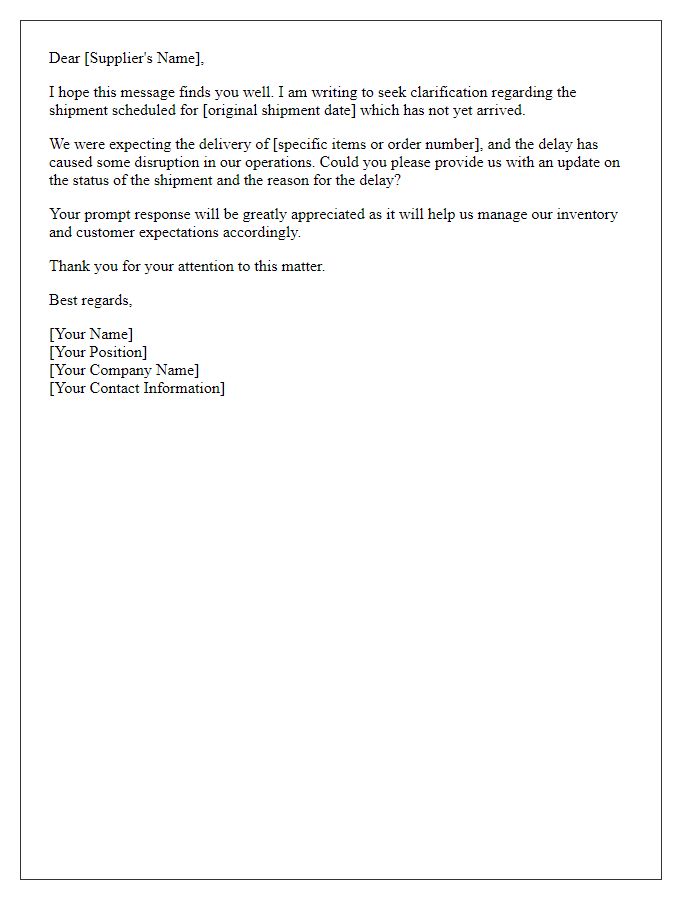Hey there! We've all been in that frustrating situation where a shipment is delayed, and it can really throw a wrench in our plans. It's vital to communicate these concerns effectively, especially when you're relying on timely deliveries. In this article, we'll explore how to craft a letter that conveys your worries while remaining professional and clear. So, let's dive into the details and ensure your voice is heard'keep reading!

Shipping details and order information
Shipping delays can significantly impact customer satisfaction and operational efficiency, particularly for online retailers. For instance, shipments from major carriers like FedEx or UPS often experience delays due to various factors, including weather disruptions, increased demand during peak seasons, or logistical complications at distribution hubs. Tracking numbers allow customers to monitor their packages in real-time, but unexpected delays can result in uncertainty. Estimated delivery dates, usually provided at the time of purchase, may shift due to these unforeseen circumstances. Customers awaiting their orders can become anxious, especially when essential items are involved, like electronics or health products. This situation requires prompt communication from the retailer to explain the delay and offer solutions or compensation, reinforcing customer trust and loyalty.
Expression of dissatisfaction and impact
The recent shipment delay of the critical inventory from the supplier, XYZ Logistics, has caused significant disruption to operational workflows. Expected delivery on October 1, 2023, has now been postponed to an uncertain date, jeopardizing our ability to meet client demands. The backlog of orders in our distribution center, located in Austin, Texas, is exacerbating the issue, leading to potential revenue loss. Additionally, communication gaps regarding tracking updates have intensified frustration among staff and customers alike. This situation highlights the need for immediate resolution and reassessment of logistics protocols to prevent recurrence.
Request for explanation and resolution
Shipment delays can significantly impact business operations and customer satisfaction. An inquiry regarding shipment delays seeks clarification about the reason for the holdup, which could stem from various factors such as customs issues, logistical challenges, or supplier shortages. For instance, packages may be delayed due to port congestion at major shipping hubs like Los Angeles or New York, where increased volume often leads to backlogs. Customers expect timely deliveries, and disruptions can strain relationships or affect revenue. Therefore, a request for an explanation and resolution should focus on understanding the specific circumstances surrounding the delay and outline potential remedies to ensure future shipments are delivered on time.
Proposed deadline for response
Shipping delays can significantly impact businesses, particularly for e-commerce retailers relying on timely delivery. In 2023, reports indicated that over 30% of shipments faced delays due to factors like labor shortages, weather events, and increased demand following global supply chain disruptions. When a shipment is delayed, businesses may experience stockouts, affecting sales and customer satisfaction. Companies may propose a response deadline of 48 hours to ensure timely resolution and minimize disruptions. Clear communication with suppliers and logistics partners during this period is critical for maintaining operational effectiveness in the competitive market landscape.
Contact information for further communication
Concerns regarding delayed shipments can significantly impact supply chain operations and customer satisfaction. When a shipment, particularly one containing critical components like electronic parts for manufacturing, is delayed beyond the expected delivery date, communication becomes crucial. The shipping process, often handled by logistics companies such as FedEx or UPS, may encounter issues due to unforeseen circumstances, including natural disasters or traffic disruptions. Customers affected by such delays may require immediate updates; therefore, providing contact information for further communication ensures transparency and allows for quick resolutions. Utilizing various channels, such as email addresses and dedicated customer service phone lines, can facilitate prompt inquiries and foster trust between businesses and clients.
















Comments